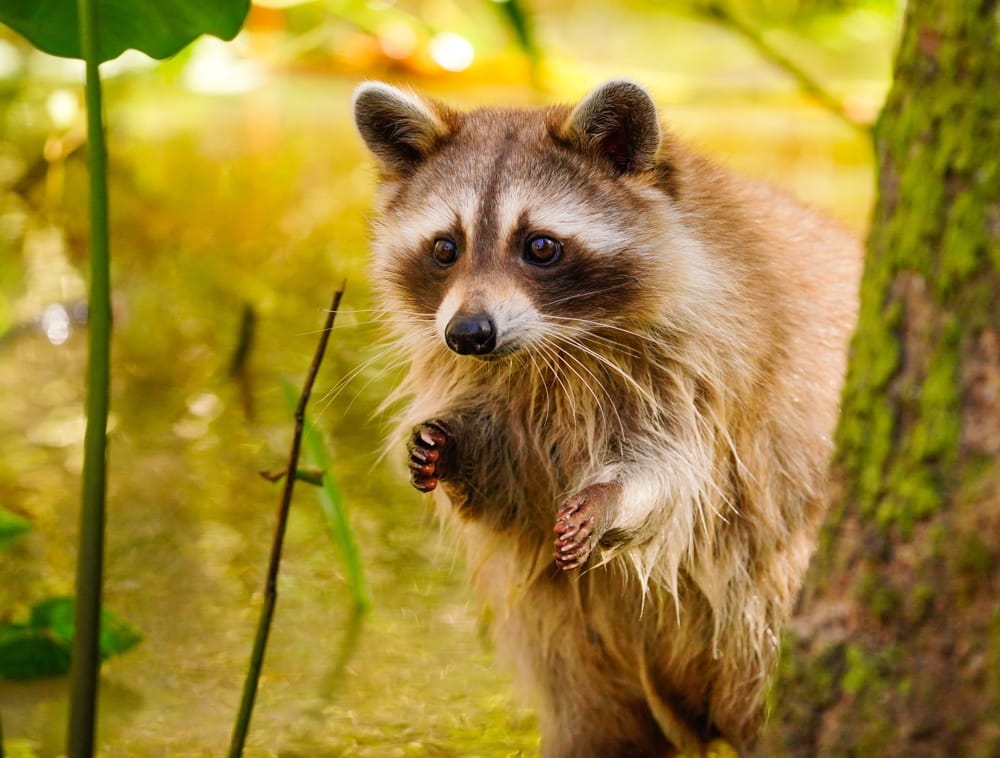Raccoons are widespread across Ontario, including in many towns and cities. That means that residents find themselves encountering these wild creatures pretty much every day. To deal with your problem the best way is to hire a wildlife control service in Hamilton. However, there are some times of the year when you may experience more raccoon issues than usual.
During raccoon mating and nursing seasons, you’ll notice the creatures are much more visible and active, often invading attics, chimneys, and sheds in search of a suitable den in which to raise their young. Pregnant raccoons are typically the culprits when it comes to a home invasion.
So, how do you spot a pregnant raccoon?
Raccoon mating season
Raccoons usually mate between January and May, depending on the severity of the winter, availability of food, water, etc. Female raccoons are pregnant for around 65 days, giving birth during the spring or early summer months. In Ontario, the optimal time for mating is between January and March.
So, raccoons that are active on your property around these times are most likely pregnant or nursing females. Homeowners should avoid coming into contact with raccoons at this time, as the animals become extremely aggressive, especially when protecting youngsters.
How can you spot a pregnant raccoon?
Remember that it’s illegal in Ontario to kill, stress, or remove wildlife for one kilometre without the necessary permit or license, so identifying a pregnant raccoon before taking steps to remove it is vital.
Wildlife removal specialists need to know whether a raccoon is pregnant or has already given birth before they attempt to remove the animal from your property. That’s because, if raccoon babies are permanently isolated from their mothers, they are highly unlikely to survive. Also, a mother raccoon that has been removed will do everything she can to return to her kits.
Male or female?
Clearly, you first need to find out if the raccoon you’ve seen is male or female. Generally, male adult raccoons are quite a lot larger than females. Also, a female raccoon’s face is smaller and ore feminine-looking than the broader male version.
Male raccoons tend to be solitary, whereas females often live in sororities and family groups. So, if you spot a raccoon that’s accompanied by smaller animals, they are most likely her last year’s kits. Once a female raccoon is pregnant, she will isolate herself from her group, waiting until the kits are born before re-joining the community.
Raccoons in the attic?
If you discover a raccoon in your attic, chimney, or outbuilding, it’s likely that the animal is a pregnant female. Typically, you’ll hear heavy thumping noises as the mother raccoon begins creating a nest. Once the babies have arrived, you’ll hear their distinctive squealing and crying sounds, and you’ll most likely see the mother raccoon foraging for food overnight and during the very early morning.
What should you do?
Never try to remove a pregnant raccoon yourself! Not only are these animals highly aggressive, but you could also accidentally orphan a whole litter of babies if you get it wrong, and the raccoon has already given birth.
The best course of action to take is to contact your local wildlife removal specialist. Wildlife removal firms are experts in relocating and controlling problem raccoons that have taken up residence on your property, saving you a whole lot of time, hassle, and stress.

